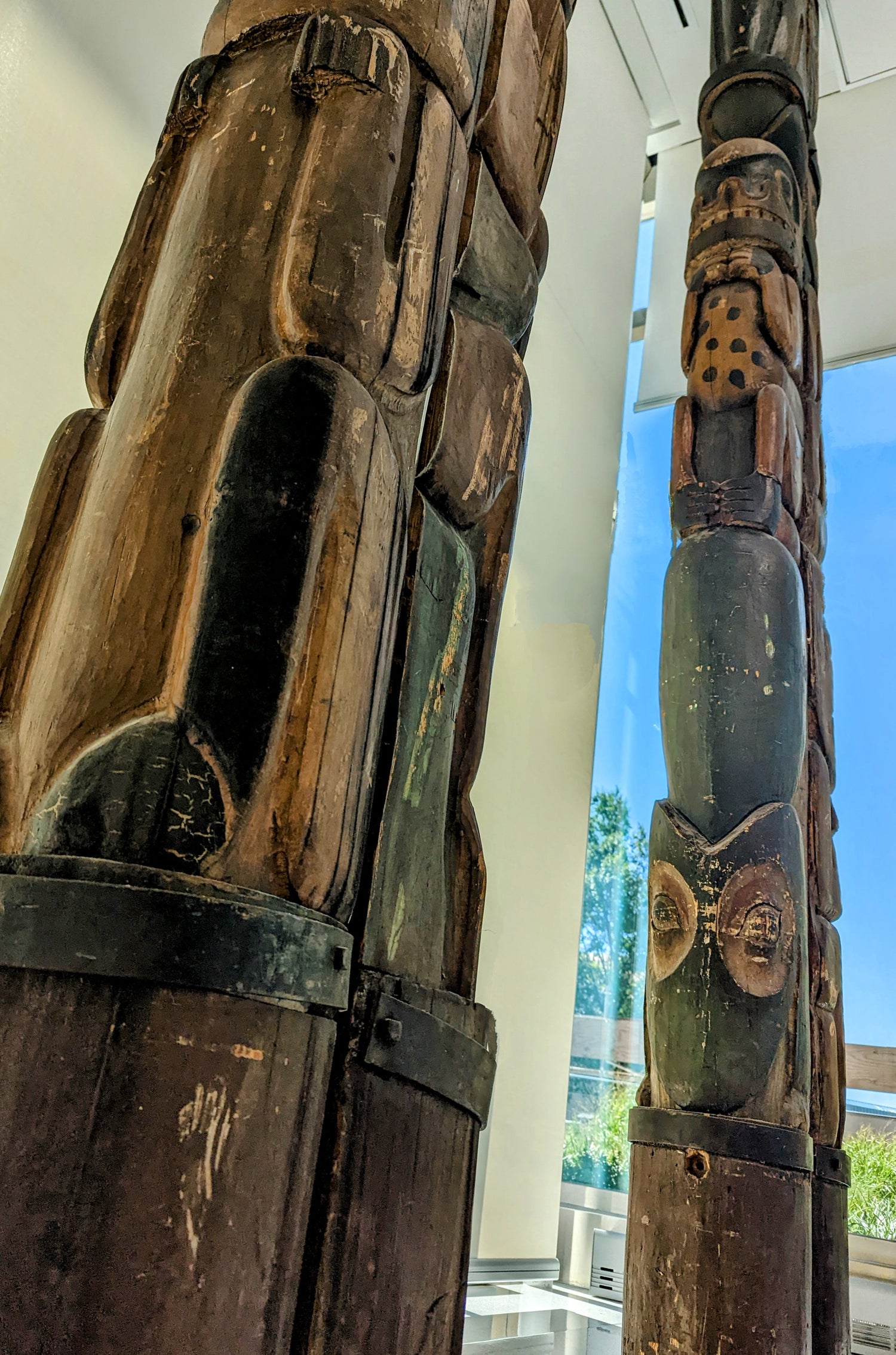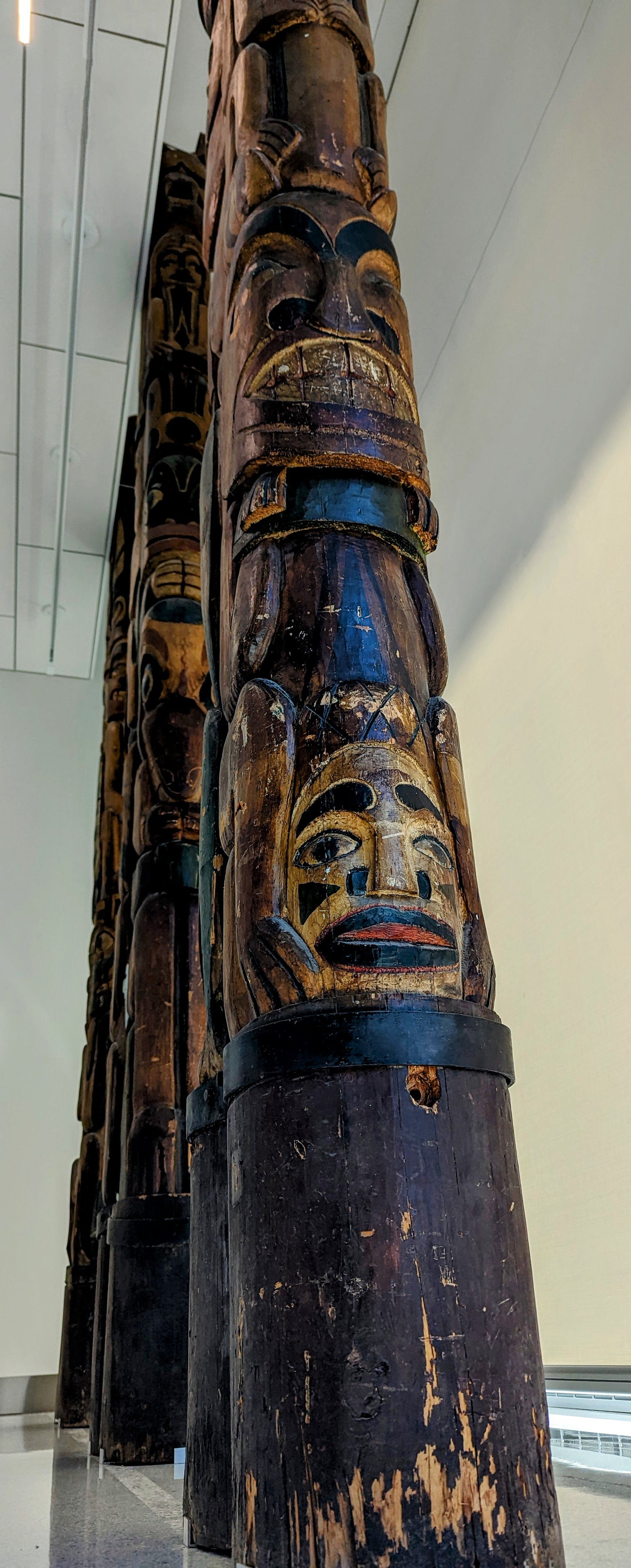Totems of the Pacific Northwest
SUGGESTED ACTIVITIES WHEN YOU VISIT THE RED EARTH ART CENTER
Find the Totem that features the following images:
Kats/Raven/Daughter of Fog
Owl/Shaman/Lightning Snake/Weasel
Sea Lion/Raven/Blackskin
Raven Pole
Sea Lion/Whale/Frog
Eagle/Boy/Beaver
Red Earth staff will provide students a sketch pad and pencils to draw an animal found on the Totem exhibit.

Six Pacific Northwest Totem Poles can be viewed at the Red Earth Art Center.
Tribal people of the Pacific Northwest Coast carved the likeness of their totems onto vast poles. The function of totem poles varied, but overall they were historical monuments and documents. They displayed origins, lineages, supernatural experiences, exploits and acquisitions. In addition they gave the people their status in their nation and within their village. The figures recorded the past, displaying it in the present and preserving it for the future.
The first totem pole known to science was seen on Langara Island, Queen Charlotte Islands in 1791. In 1792, seaman John Bartlett wrote, “We went ashore where one of their winter houses stood. The entrance was cut out of a large tree and carved all the way up and down. The door was made like a man’s head and the passage the house was between his teeth.”

It is thought that totem poles derive from three contributing sources: carved house posts, graveyard figures and miniature carvings of stone, ivory, and wood. They included shaman’s charms, chiefs’ staffs, batons, ladle handles, and canes.
We have many theories, but little evidence concerning the origins of totem poles. However, once the custom became a part of tribal ritual, it flourished. Before the end of the 18th century, travelers encountered monumental carvings in cedar along a coastal expanse of one thousand miles.
Many of the crests used in Pacific Northwest Coast carvings have their origins in ancient myth. According to these tales, it was a time before the world was as it is now; a time when humans and animals were not separate and distinct; and when they could transform easily from one to another. A family obtained its “origin” crest from an early ancestor who had a memorable adventure of encounter with a supernatural creature. This adventure often entailed the ancestor’s overcoming and killing the creature, or the creature becoming human to establish the lineage.
However, a crest could also be acquired through marriage. Other ways that a family and/or chief obtained a new crest or totem was through the conquest of an enemy, or by trade. In some cases another family or chief gave it as compensation for special services, or they appropriated the crest at the extinction of the original owner’s family. Outstanding episodes of family history, migrations and settlement, war adventures, resource ownership or special visions could generate new crests.
